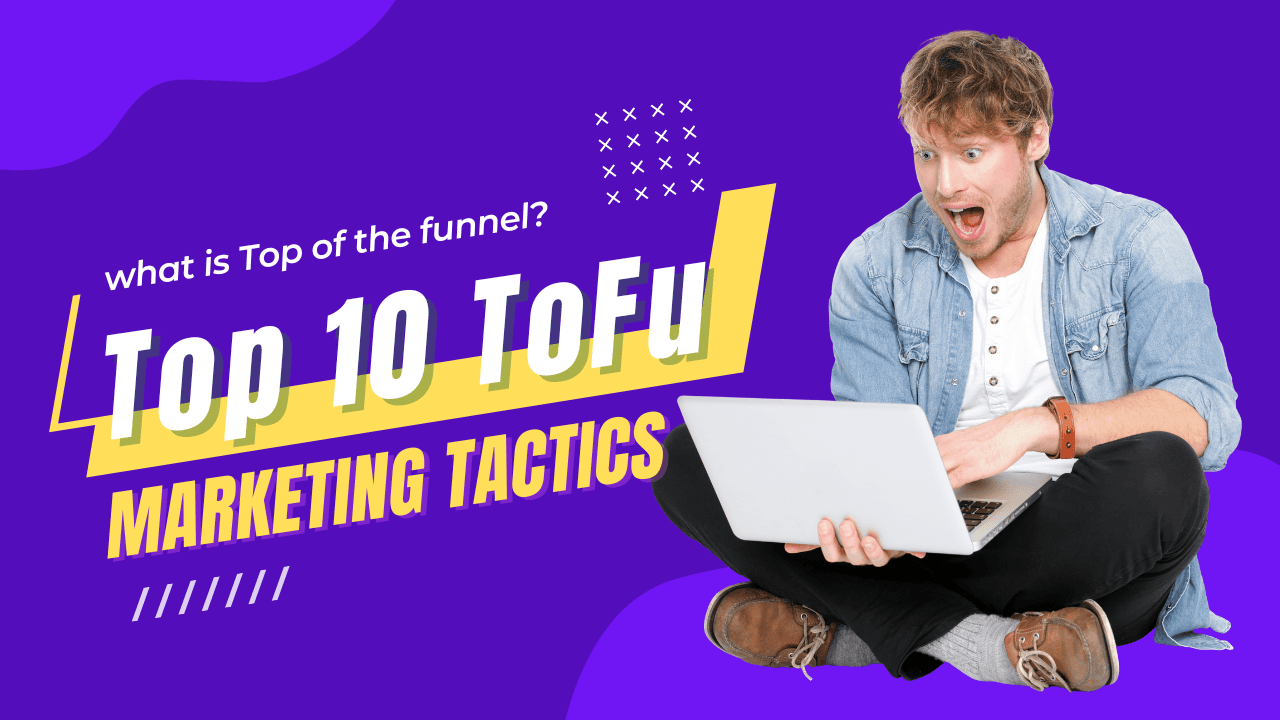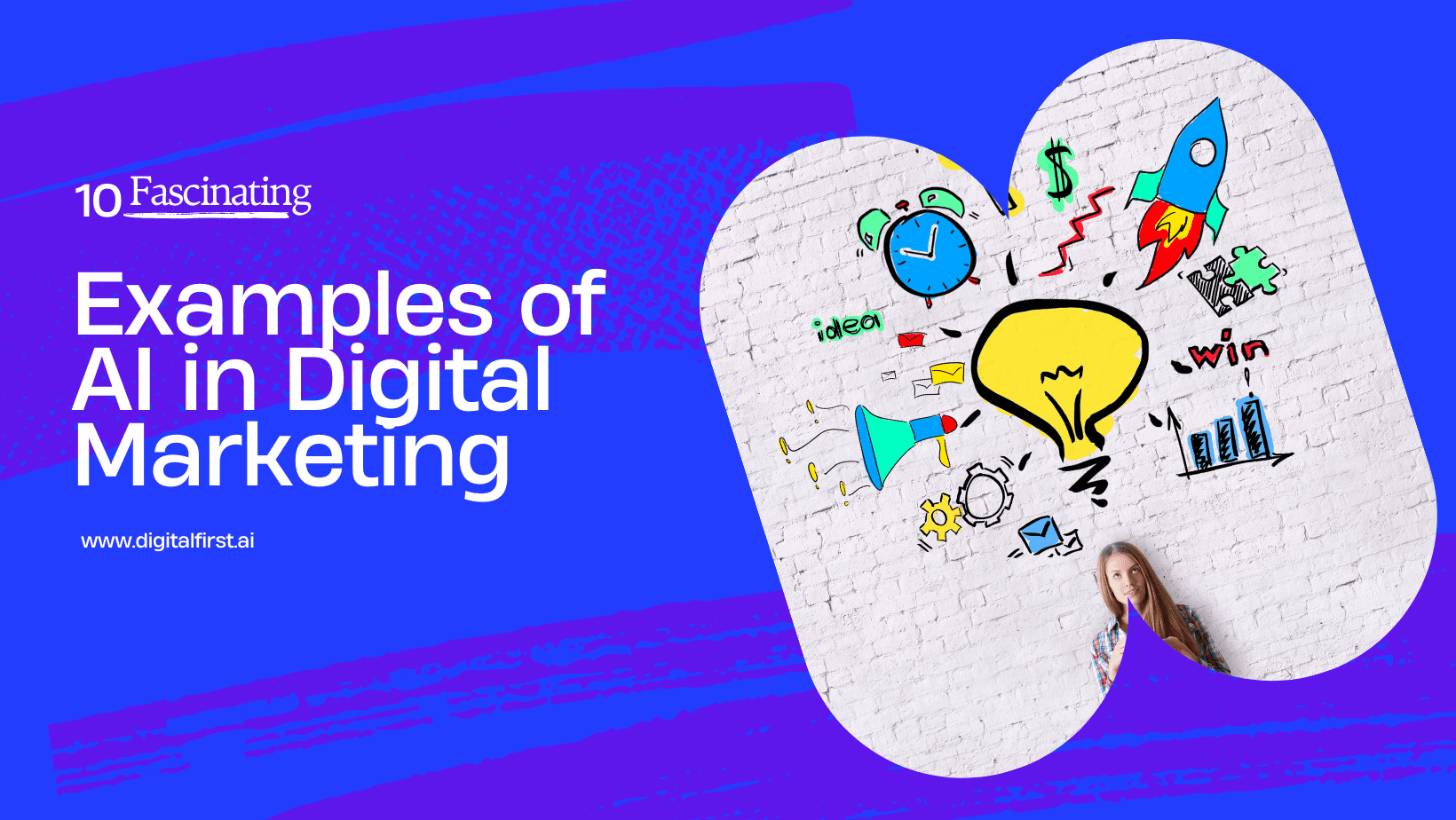What Is The Top Of The Funnel Marketing (ToFu)? Top 10 Tactics To Explore
Top of the funnel (TOFU) is a phase in marketing that involves attracting people to your brand. It's the process of targeting an audience, introducing your product to them, and turning them into potential customers.
Sonu kalwar
Share:
Top of the funnel (TOFU) is a phase in marketing that involves attracting people to your brand. It's the process of targeting an audience, introducing your product to them, and turning them into potential customers.
The first phase in the marketing funnel is TOFU. TOFU is all about attracting potential customers to your brand by creating awareness of it and its products or services. TOFU refers to those who have not heard about you yet and are just learning about what you do.
The goal at this point is to get consumers interested in learning more about your company, even if they aren't ready to buy from you yet. This happens through content creation such as educational articles, social media posts, videos or podcasts that provide value for consumers without asking anything in return. Unlike other stages like MOFU (middle-of-the-funnel) which focus on converting leads into sales with targeted messaging based off previous interactions through email campaigns; TOFU does not require any user data input or interaction before hand because consumers are only just discovering what makes your brand unique so they don’t have any past knowledge on how valuable it could potentially be for them yet.
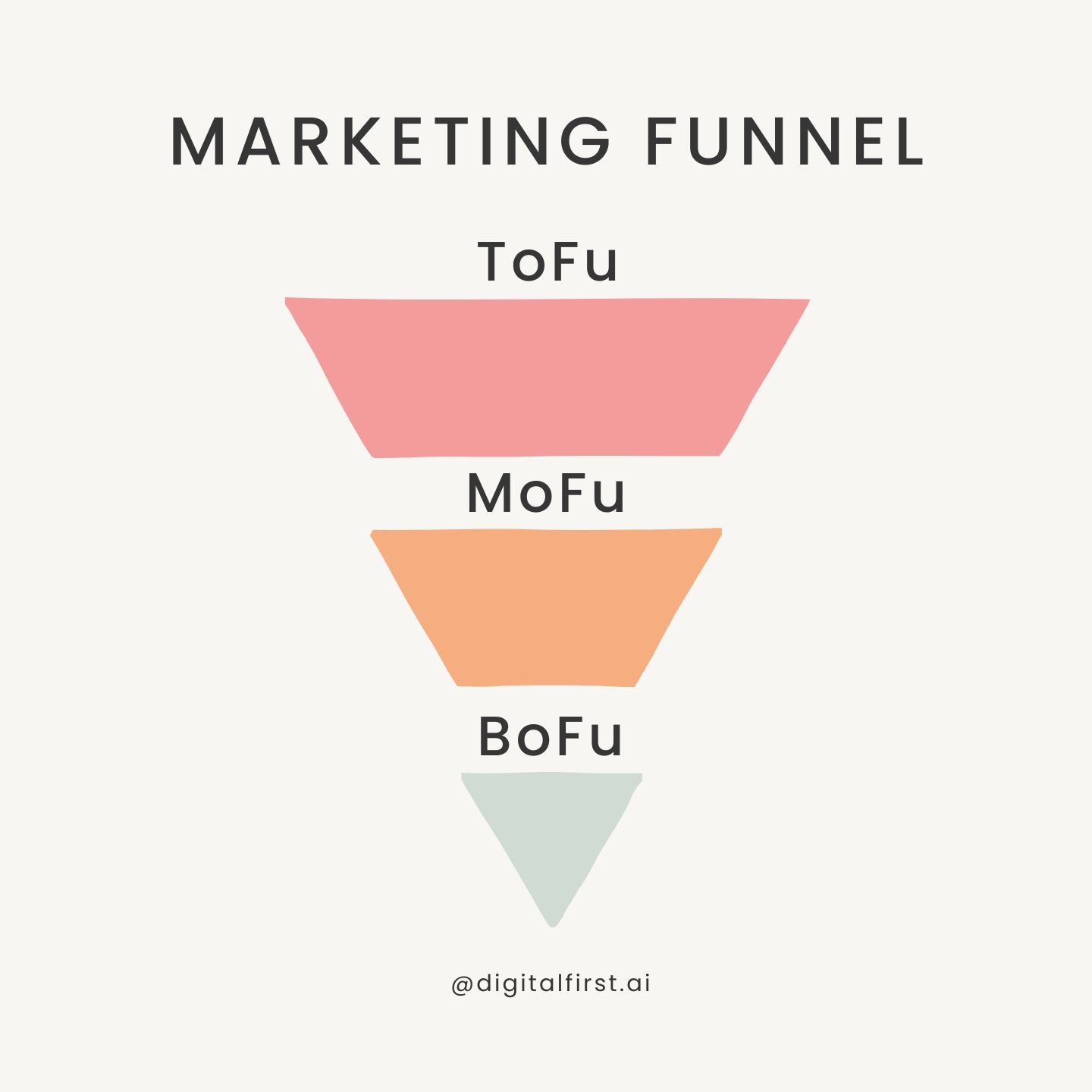
Try Digital First AI's Plug & Play AI-Powered Marketing Workflows Builder

No credit card needed. Instant access. Try now for free.
Benefits of top of the funnel marketing?
Build brand awareness
According to your marketing strategy, you may want to increase the brand awareness of your business or service. Brand awareness is how familiar customers, prospects and other groups are with your company, product or service.
Tap into a diverse skill set from one provider
Though there's plenty of overlap between top-of-the-funnel and mid-funnel marketing services (for example, both content creation and promotion), it makes sense for many businesses to seek out a provider that specializes in TOFU services rather than hiring three separate vendors with limited experience in their desired areas.
Build a community around your brand
As a business, one of your objectives should be to build a community around your brand. Building a strong community is essential to creating brand loyalty and increasing the number of repeat customers who are happy to engage with you. Depending on the type of business you run, there are several different ways that you can foster a sense of community around your brand:
Build a community based on an interest or hobby. If you sell sporting goods, for example, you could create an online space where people share stories and tips about their favorite sports or discuss topics related to playing sports or keeping fit in general.
Build a community based on location. If your brick-and-mortar store serves a specific area, consider using local events or resources as focal points for building that community online. You could create content about local restaurants and shops in addition to information about local promotions at your own company.
Build a community based on lifestyle or activities. If your company sells travel gear and accessories, for example, this might be an ideal way to connect with potential customers by creating a digital space where they can share stories from their adventures abroad—you could even create a hashtag so that all of these posts can be grouped together under one umbrella!
Target the right audiences
It’s important to know your target audience and their needs. If you have a broad audience, you should segment them into smaller groups and create customer personas that describe their characteristics and behavior.
If you don’t know your target audience, you can do some research by:
reviewing your website traffic data;
analyzing your customers' buying habits;
asking questions in online forums.
Create curiosity in your target audience
Curiosity is a powerful motivator and a crucial component to top of the funnel marketing. The best way to create curiosity is through content. Here are some strategies you can use:
Write headlines that hint at an outcome or conclusion, but don’t reveal it. Sometimes the impact of your headline will be greater if it’s not too explicit and instead encourages readers to click through for more.
Use social media to build curiosity. Tease your audience with a snippet of information followed by a link that says “read more” or “find out how they did it here."
Explore deeper
10 Top of the funnel marketing tactics to explore

Invest in Content Marketing
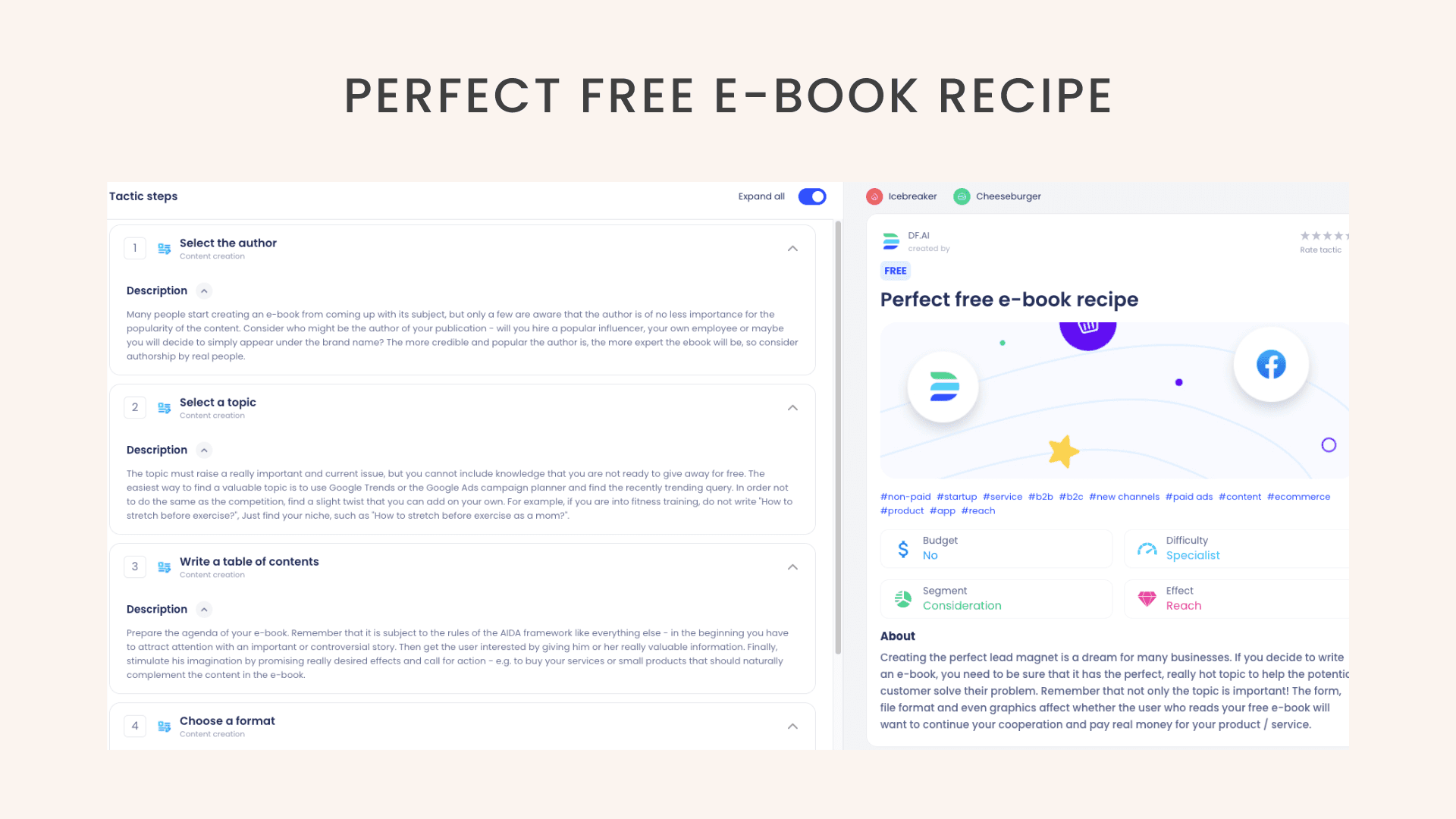
A robust content strategy is a crucial aspect of your marketing plan. If you’re not producing content, you’re missing out on a huge opportunity to connect with potential customers — and to turn them into paying customers.
Content marketing is the creation of assets (like e-books, blogs and videos) designed to engage prospects before they've fully committed to buying your product. A strong content strategy will help you build trust with prospects at the top of your funnel and encourage them back to your site again and again by providing much-needed context as they research their options.
Create a Referral Program
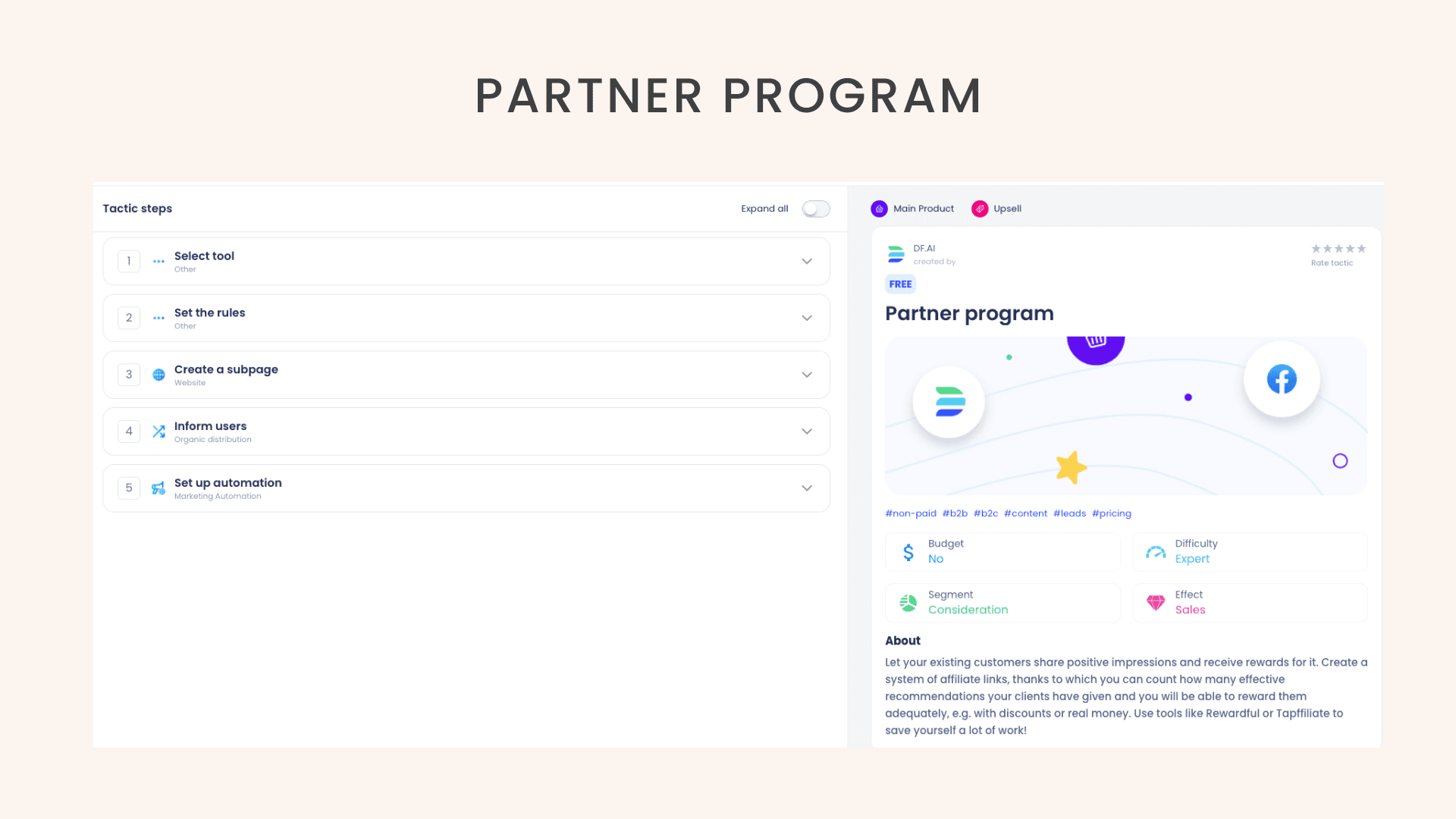
One way to get qualified leads is to create a referral program. Customer referrals are a great way to generate warm leads, and they can be as simple or as complex as you want. Referral programs allow your business to benefit from passive marketing and promotion, helping you gain access to your target audience.
They also increase customer loyalty, brand awareness, and social proof.
A good example of a referral program is Dropbox's refer-a-friend program. If a customer refers the service to friends or family members and those users sign up for an account, both parties receive extra storage space for free. You could create something similar by offering discounts or special offers when someone refers your products or services to another person who becomes a paying customer. To do this effectively, you'll need some kind of referral tracking software that can let you know where the lead came from (i.e., "John referred Jane").
Run Contests and Giveaways
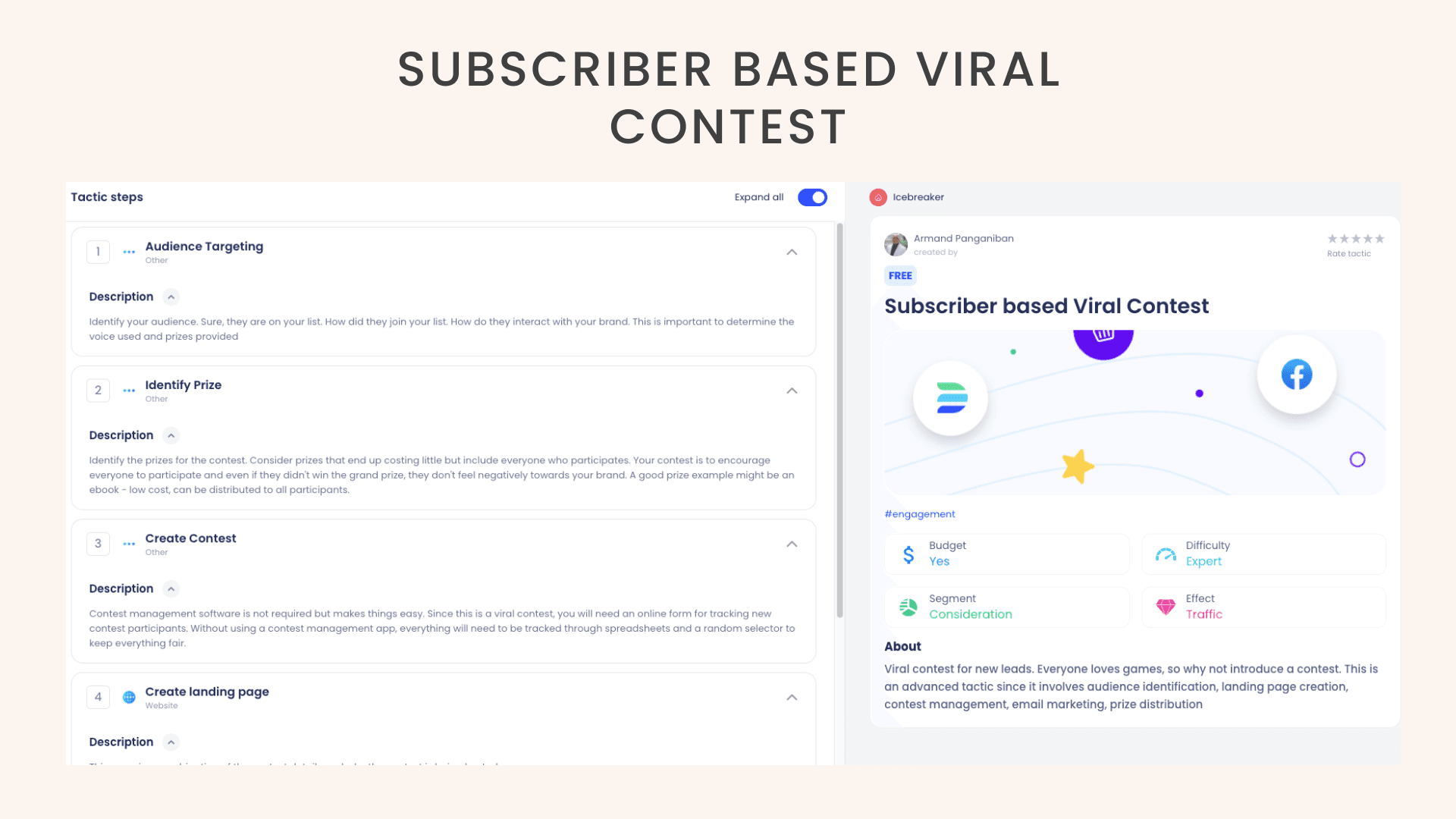
Social media is all about having fun, and the more free stuff you give away, the more followers you'll attract. In fact, we can't think of any other business that challenges its customers to deliver free goods or experiences—which makes running these contests a natural extension of social media marketing. These contests are dynamic (which means they're easy to run) and have a wide range of already-known benefits for your business. So why not try running a contest and see what happens?
Here are some pros and cons of running contests:
Only one winner! This provides one less decision point for customers and means fewer opportunities for errors in terms of fulfilling the terms or even administering the prize.
Running a contest also means you don't have to spend time thinking about what prizes to offer or how many people will enter. Furthermore, since contests often require entrants to enter their email address, this allows you to continuously target those who've entered a contest in the past with new offers on your site (although be wary of potential spam complaints).
Implement Social Media Advertising

Social media is one of the best ways to get your brand in front of new people. This tactic has a built-in audience because these platforms are where people spend their time. For example, you can target audiences on Facebook based on their interests, age, job title, and more. You can also retarget ads to past visitors who have been to your website through social media ads.
There are many different types of ads you can run on social media sites like Facebook, LinkedIn and Instagram including:
Image Ads
Video Ads
Carousel Ads
Lead Generation Ads
These are great for promoting your business or content but they're also good for promoting events that you want to host or attend because they're easily shareable.
Use Search Engine Optimization (SEO)
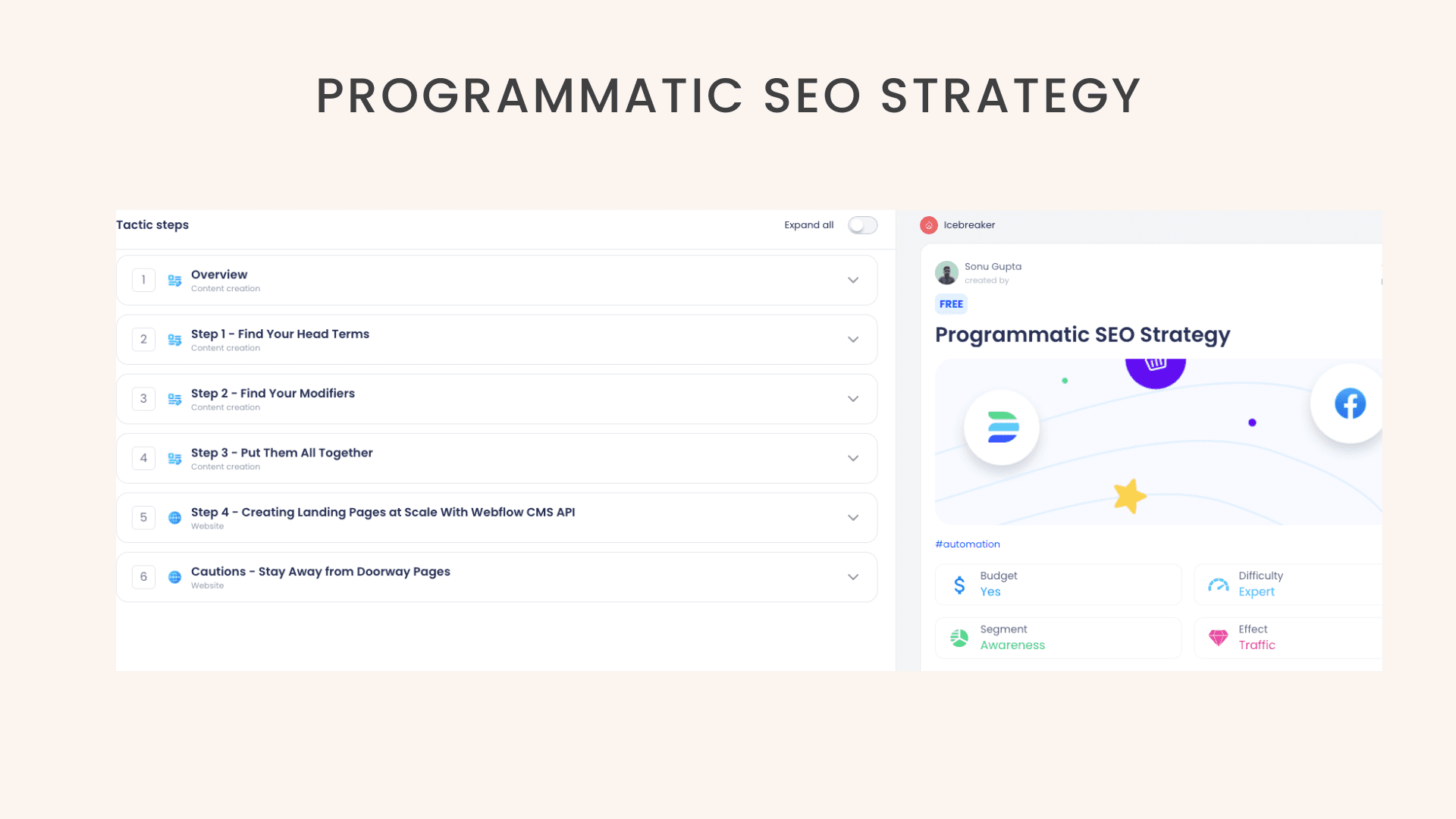
Fulfilling the needs of your customers and prospects is the goal of every business. The Internet has made this process far easier, with powerful tools that allow small businesses to quickly connect with potential customers and capitalize on their desire to learn more about you. One of these tools is search engine optimization (SEO)—the art of making your site as visible as possible in search engines such as Google, Yahoo!, and Bing—and one of its most important components is improving your website's visibility through rich keyword-rich title tags, meta descriptions, and other pertinent text. In order to follow best practices for SEO you'll need a plan. Here are some tips from leading experts in the field that will help you get started:
Develop a Content Strategy: First things first: develop a content strategy for your website. Under this umbrella are numerous tactics for improving search engine visibility related to keywords, meta descriptions, titles and descriptions, headings/h1s/h2s/h3s/tags (deeper), URLs (web addresses) (deeper), page layout/designs and other topics all related to creating high-quality content that entices visitors to return time after time.
Create Keyword-Rich Title Tags : Your title tag should show up at the top in search results when users find specific keywords within the content on your site or page. This is one way you can improve how well your site ranks in major search engines like Google and Yahoo! although it's not necessarily what people are looking for when they use a particular phrase as their query or key word research tool (such as Yahoo! Keyword Planner).
Create Meta Descriptions: These appear after a click on an image or link within the content so that potential customers know what information will be available directly under it once they click on it – e.g., “about us” can be thought of as an appetizer menu for everything contained in an article about yourself – along with any specialties
Leverage Webinars, Seminars, and Educational Events
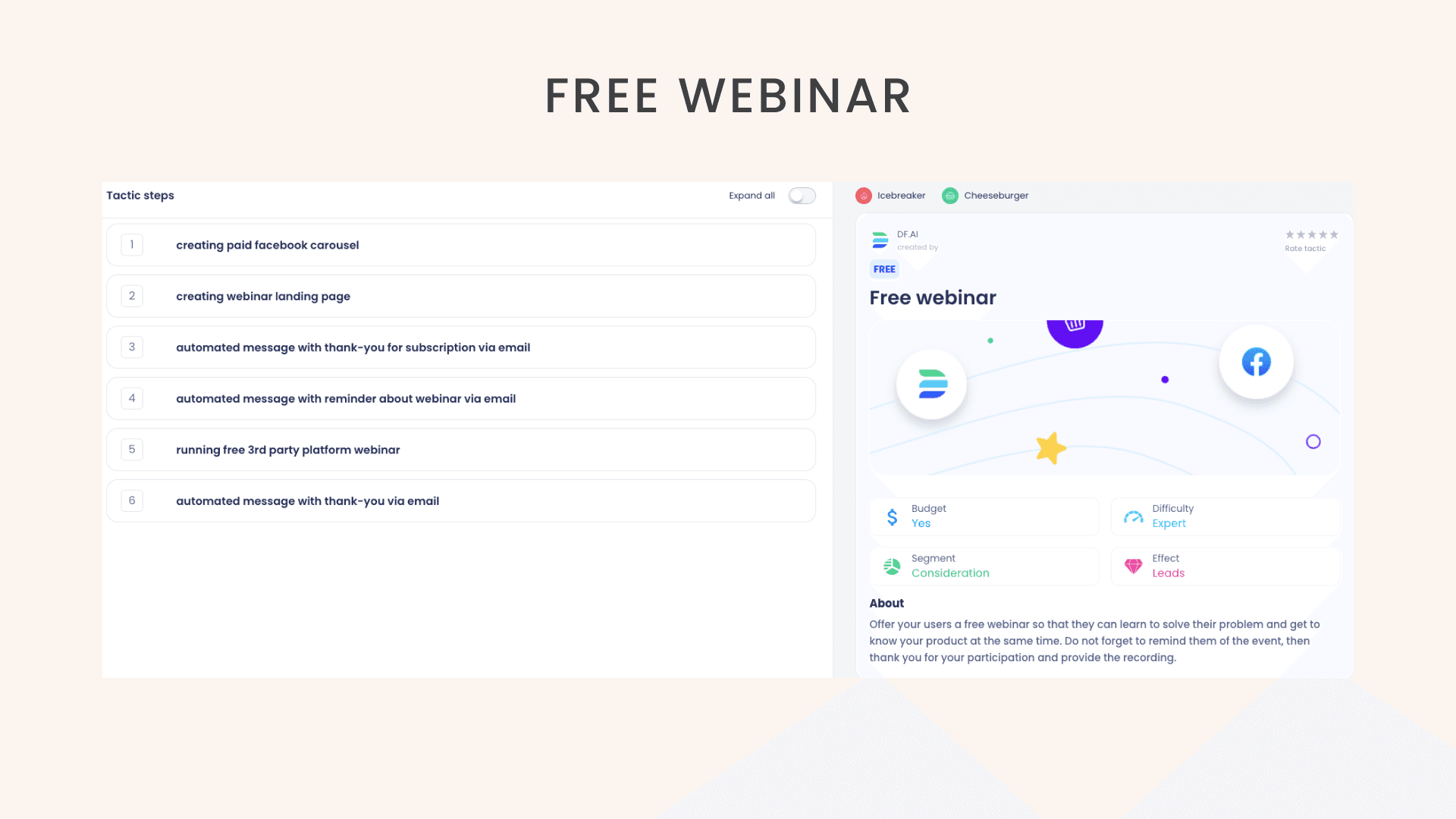
As anyone who has done any kind of sales knows, it’s a lot easier to convince someone to buy something if they trust you. Webinars, seminars and educational events are the perfect way to build trust with leads and establish thought leadership. They can also be a great way to generate new leads by drawing in people interested in your team’s expertise or what your business has to offer.
Webinars are a great example of an educational event that can be leveraged for this purpose. These virtual events have become a staple for marketers trying to reach their TOFU audience, especially those selling B2B products and services. Webinars typically focus on providing educational content as opposed to using hard-selling tactics; although, they can also serve as an opportunity for upselling current customers or cross-selling complementary products (as long as it's relevant).
If you aren't sure where to start, try hosting webinars on topics within your industry that fit your target buyer personas' professional needs or interests –– such as how-to tutorials and tips, best practices or key trends affecting the market right now. If you're looking for more inspiration, here's a list of webinar topic ideas that you can use while planning out future marketing campaigns
Incorporate Retargeting Ads Into Your Overall Strategy
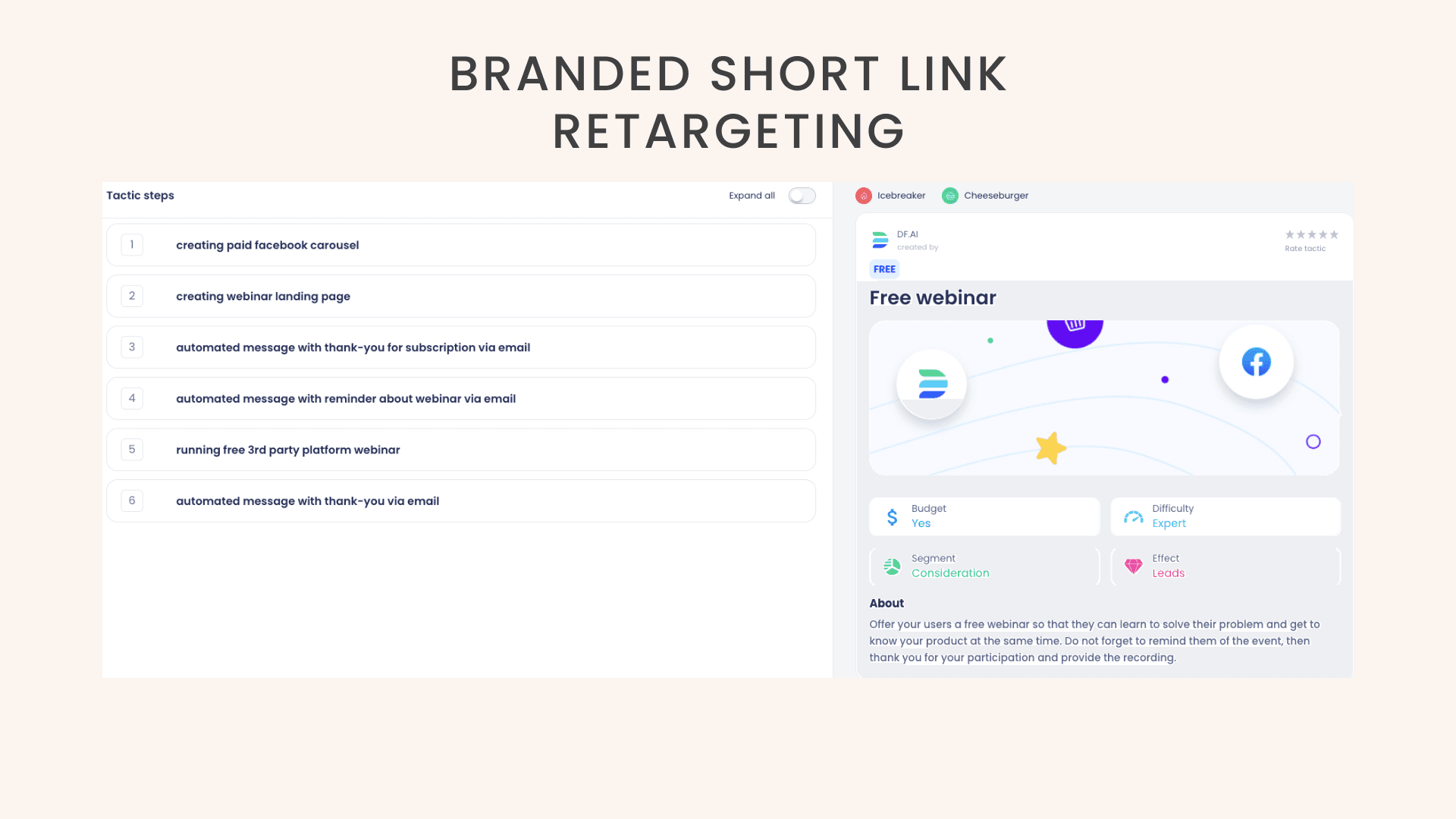
Once you’ve created a solid presence on social media and online forums, you can incorporate retargeting ads into your overall strategy. Retargeting is a great way to bring customers back to your website who have previously visited.
Retargeting ads are so effective because the customer is already familiar with your brand. They’re not seeing the ad out of the blue and deciding whether they want to interact with your company; they’ve already done business with you, or read an article on your blog. They know who you are, and now it’s time for them to take action again!
You may also consider running Google Shopping ads, as these are another excellent retargeting tool that will reach customers who have already visited your website (or at least viewed a product page).
Conduct Direct Mail Outreach and Promote Events
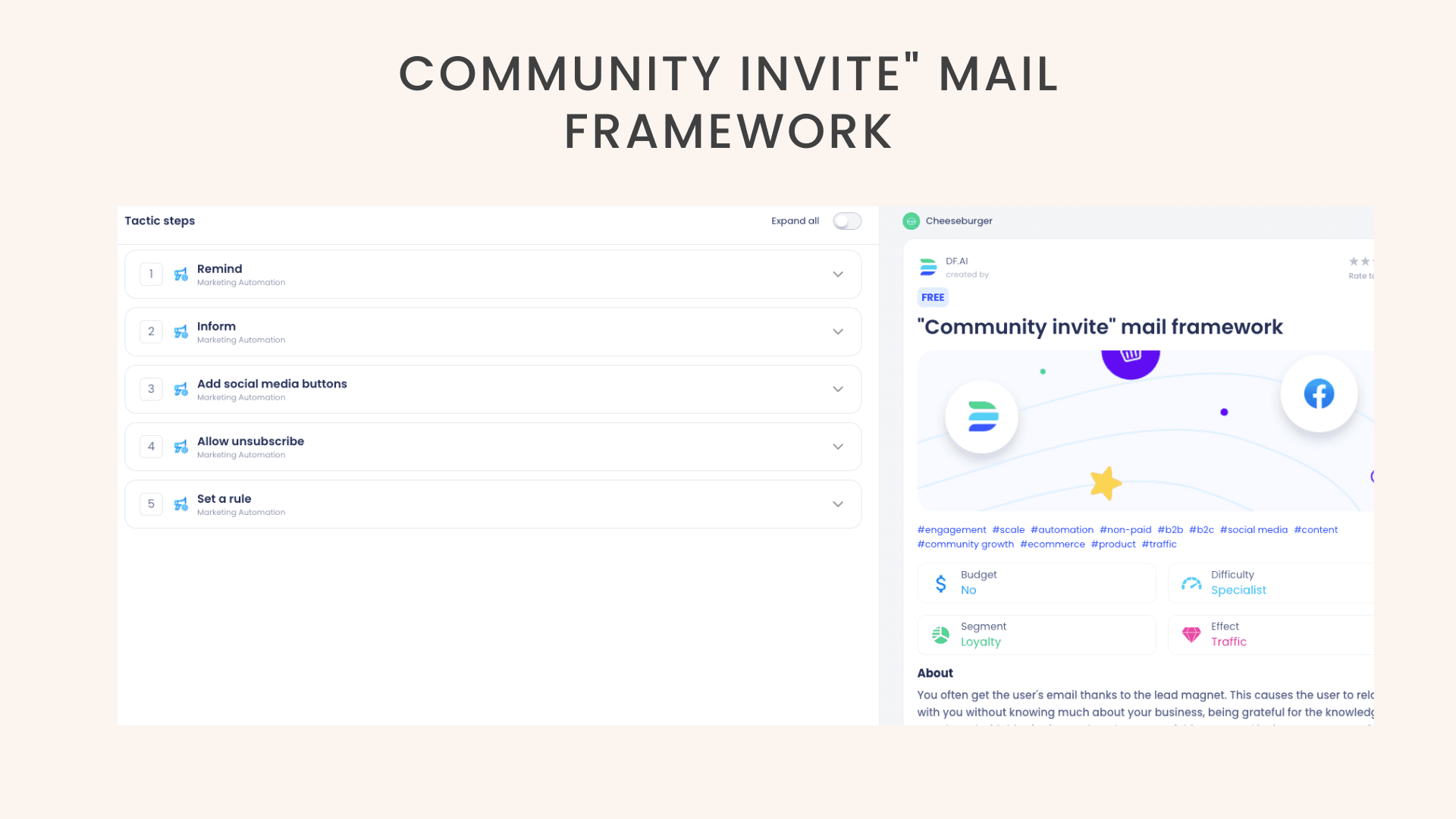
Did you know that direct mail responses are rising? The Direct Marketing Association found that in 2016, the response rate for letter-sized mail was 4.9 percent and that for catalogs was 5.3 percent. These numbers may seem small but compare them to email at 0.6 percent and you’ll see why direct mail is making a comeback.
Direct mail can be done through traditional snail mail or by purchasing an email list from a reputable vendor like B2B Leo. When sending out your direct mail campaign, consider partnering with another brand or business on a collaborative offer to drive attention to your brand.
Additionally, if your business has a physical location, consider having events at your store as well as participating in trade shows and conferences where product demonstrations can be used to drive interest in your company.
Other types of top of funnel marketing tactics include advertising (print ads, billboards, etc.), sponsorships (community events or other organizations), giveaways, contests and some combination of the above!
Focus on Media Coverage and Public Relations Efforts
In that vein, a great way to build brand awareness is by pitching your story to journalists, bloggers, and other influencers.
The key to getting major media coverage is developing relationships with journalists who cover you and your industry. After all, if you already have a personal connection with the media professional writing about your company, they’re more likely to respond positively to your pitch.
To this end, it’s important for you to build a press list of relevant contacts in the media. Once you’ve put together an initial list of journalists that cover your industry, send them personalized emails or LinkedIn messages letting them know about newsworthy events related to your business like product launches or helpful new content pieces.
Other ways you can get publicity include writing press releases around newsworthy events related to your business and organizing press events such as private dinners or press conferences where attendees can learn more about what you do and why it matters.
Explore Influencer Marketing Opportunities
Influencer marketing is a term that gets thrown around a lot, but what does it really mean? Influencer marketing is the practice of using people with online influence to help promote your business. Generally, these are people who are able to reach and engage an audience more effectively than you would be able to reach on your own.
There are some advantages to influencer marketing:
it can help you reach your target audience
you get support from someone with authority in your niche/industry/sector
your brand may benefit from social proof if that person's followers see them promoting your product or service
you may learn something new about how to market or position your product or service that you hadn't previously considered
Be creative and make your business stand out
Being creative can help your business stand out. Being different and memorable is a good way to get noticed, which is something you definitely want. As you explore funnels with your customer in mind, be sure to think outside the box. You might be surprised by how much creativity is rewarded in business!
Build Marketing Workflows That Work for you

No credit card needed. Instant access. Try now for free
Digital First AI empowers marketers with AI-driven tools to centralize data, build personalized strategies, and execute campaigns seamlessly.
Generate content, automate workflows, and outpace competitors—all in one secure platform.
AI-Powered Data Room: Centralize and analyze unstructured data for actionable insights.
AI Strategy Canvases: Generate 26+ strategic canvases for tailored campaigns.
Advanced Research Tools: Conduct real-time market and competitor research.
AI Content & Visuals: Create high-quality copy and visuals with leading AI models.
Drag-and-Drop Workflow Builder: Design and automate custom workflows effortlessly.
Pre-Built Templates: Jumpstart campaigns with customizable templates.
Over 15,000 marketers and entrepreneurs from around the world are already reaping the benefits. Enjoy a free trial without any commitments!

